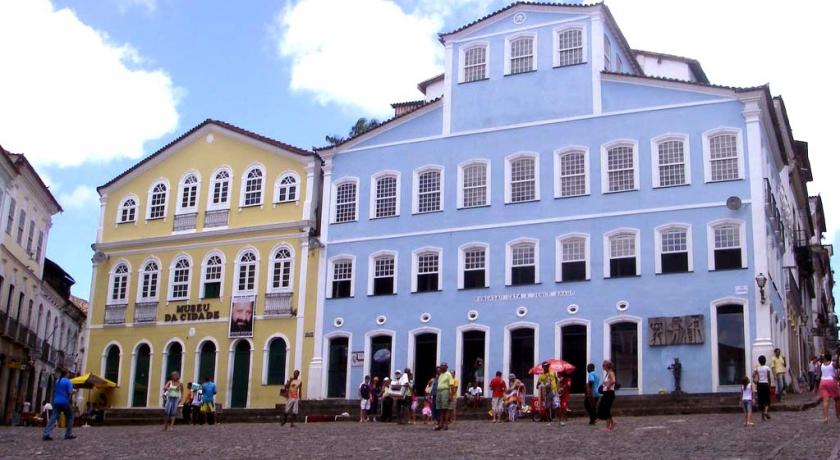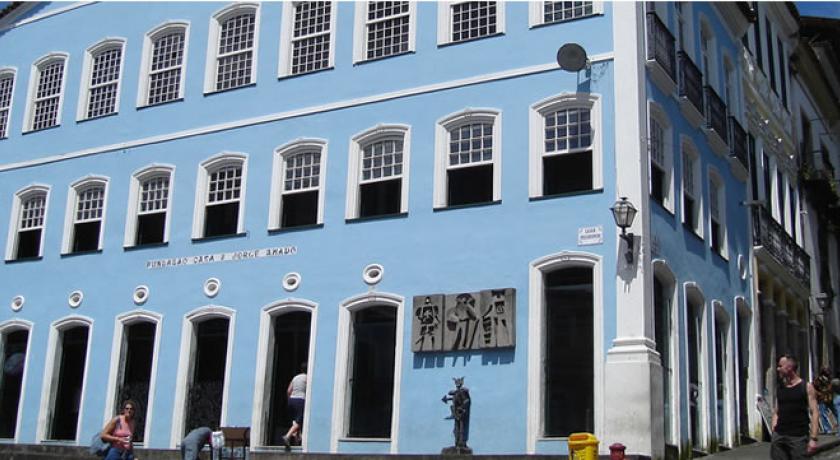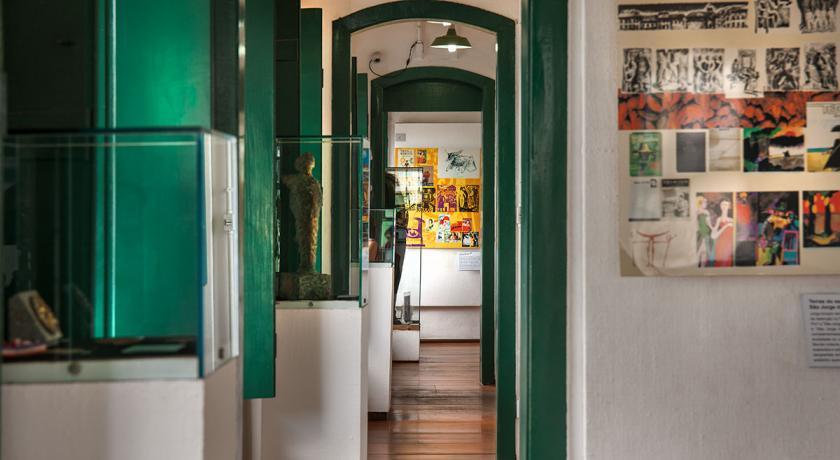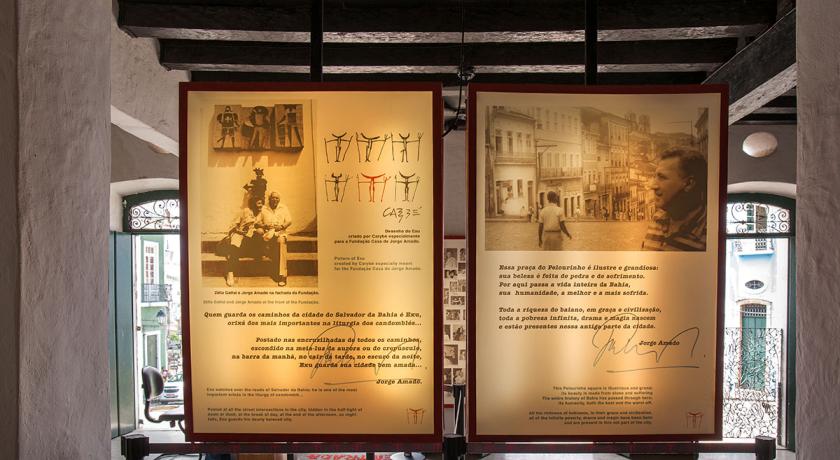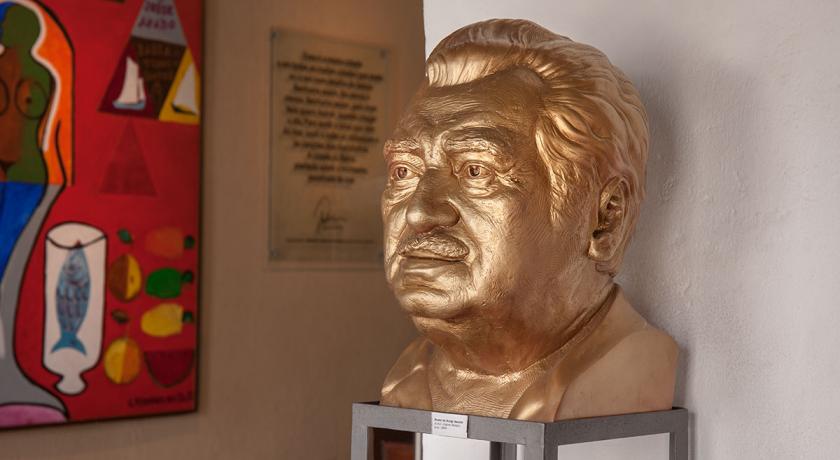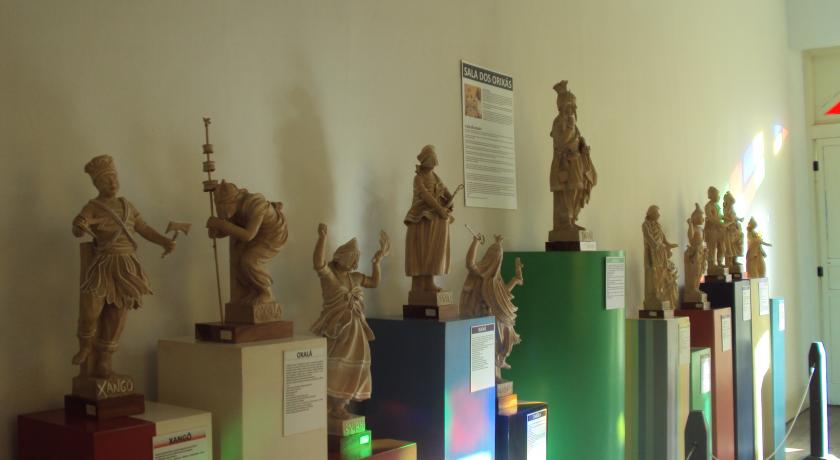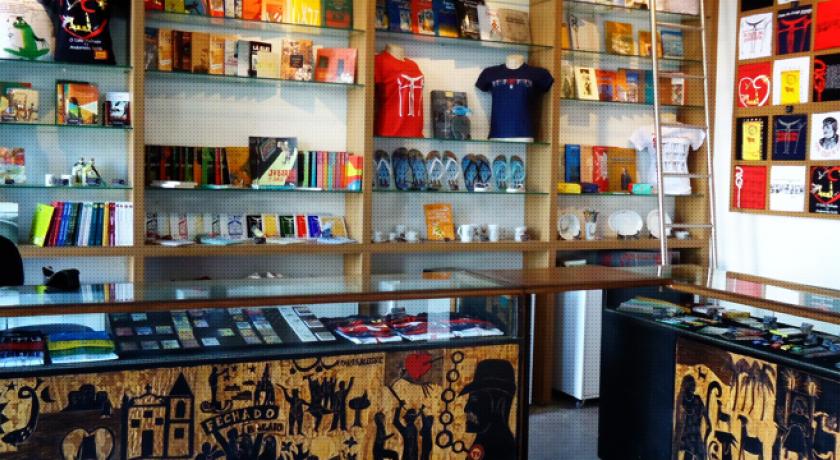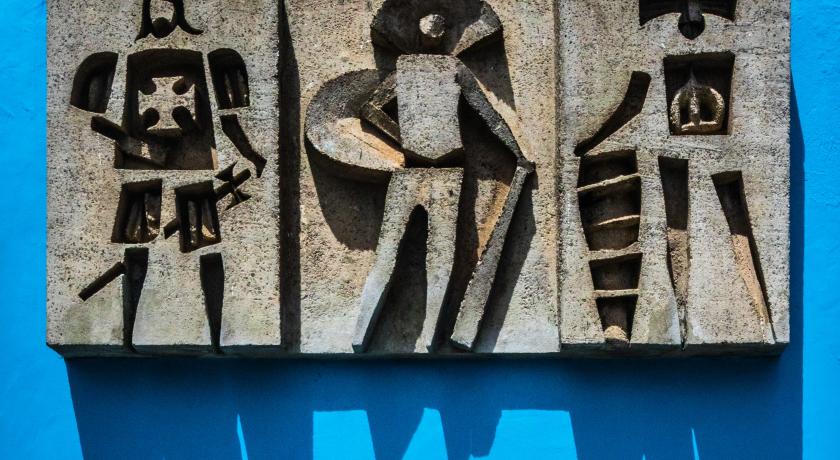Description
The Casa de Jorge Amado Foundation occupies the mansion that faces Largo do Pelourinho , in Salvador , Bahia . It is a cultural institution with several activities and a nucleus of research, with documentation on Jorge Amado , Zélia Gattai and the Bahian literature , open to visitation and highlighting courses, seminars , workshops , lecture cycles, lectures , book launches and discs , exhibitions , focusing on literary, artistic and human sciences
The Foundation
The Casa Jorge Amado Foundation is a non-governmental and non-profit organization whose objective is to preserve, research and disseminate Jorge Amado's bibliographical and artistic collections , as well as to encourage and support studies and research on the life of the writer and on art and literature. The Casa de Jorge Amado also has the mission of creating a permanent forum for debates on Bahian culture - especially on the struggle to overcome racial and socio-economic discrimination.
Its creation had the fundamental collaboration of Jorge Amado and his wife, Zélia Gattai, and the writer Myriam Fraga - until today at the head of the Foundation.
To keep alive the memory of the writer - who has already had his books translated into 49 languages and published in 55 countries - since its inauguration, Jorge Amado's House has a permanent exhibition of documents, photographs, books, his appropriations popular, adaptations, and related objects. Also presented are prizes received by Jorge and photos taken by Zélia Gattai, documenting the day-to-day of the author.
Complementarily, in order to attend to the lack of an editorial movement in Bahia, to dynamize the literature and to encourage the revelation of new writers, the Casa de Palavras Editorial Project was created, which already has 142 publications . It is also the objectives of the Casa de Jorge Amado Foundation to support and encourage studies on the Bahian letters, to debate the Brazilian reality and to stimulate literature.
The institution also conducts courses, seminars, workshops, conference cycles, lectures, book launches and discs and exhibitions, individually and in collaboration with other institutions.
-
- "A house of words, faithful to the fate that they had traced from the beginning, when it was only a dream. House of Jorge Amado - multiple, restless, changeable and mutant, that every day is renewed, hospitable and receptive "
The adoption, as suggested by James Amado, of the phrase If for peace, can enter , as a motto of the House, sought to express the desire of those who chose this space as a place in which to privilege the understanding between opposites, in the pursuit of harmony and fraternity, against all forms of discrimination.
History
In 1982, Jorge Amado celebrated 70 years of age and 50 years of literature. At that time, some institutions, in Brazil and abroad, put pressure on the writer to donate his literary collection, so that it could be better preserved and studied. However, his wife, also the writer Zélia Gattai, opposed the idea, stating that the collection belonged to the Bahians and should therefore remain in Bahia .
Two years later, Myriam Fraga raised again the question of the necessity of founding a house that kept the collection of Jorge. The Federal University of Bahia , whose rector was then Germano Tabacof , set out to begin the task of organizing the documents - in a work of recognition, cataloging and preparation of the collection - which until this moment were kept in the writer's house, Rio Vermelho , in Salvador. Those responsible were a team of professors from the School of Library Science at UFBA.
The collection was indeed important, although much of the pre-1950 documents had been destroyed, not only because of political persecutions during the Estado Novoregime, but also because of their natural dispersion during the years of exile .
Many politicians and businessmen got involved with the creation of the House. At the time president, José Sarney promised full support for the project. The two mansions chosen to house the Foundation, listed as Historic Patrimony , were donated by the Government of the State of Bahia and by BANEB . The construction company Odebrecht was in charge of the electrical and hydraulic installations, as well as fire prevention equipment for greater security of the collection.
In 1986, the Casa de Jorge Amado Foundation was created, which would be inaugurated on March 7, 1987. The opening party lasted all day. It began at 11am with the speech of President José Sarney. The abbot of the Monastery of St. Benedict , D. Timóteo Amoroso Anastácio, performed the Catholic blessing of the installations and the babalorixá Luís da Muriçoca proceeded to clean the House with incense and sacred leaves. In the afternoon, the padê took place, a ceremony that opens the obligations of candomblé, which was attended by some of the most important holy-houses of Bahia through their representatives.
At night, a great party brought together, in a memorable concert, great artists: Zezé Motta , Grande Otelo , Batatinha , Riachão , Gereba and Bebel Gilberto , Afoxé Sons of Gandhy , Caetano Veloso , Gilberto Gil , Dorival Caymmi , Edil Pacheco , Geraldo Azevedo , Moraes Moreira and Waltinho Queiroz. The Bahian actress Nilda Spencer was responsible for running the party, which was attended by more than 20,000 people [ 2 ] . "... I saw a window at the beginning of the party, I was not able to stay until the end, the heart has its limits," Jorge Amado .
Location
Casa Jorge Amado Foundation is located in the mansions number 49 and 51 of the Historical Center of Salvador . In the house of nº 68 of Alfredo Brito Street, a few meters from the headquarters of the Foundation, lived Jorge Amado. Scenario of several episodes of Jorge Amado's novels, Pelourinho was already running the world with the stories of Dona Flor, Pedro Arcanjo, Tereza Batista, Quincas and a dozen or so characters that, based on the writer's imagination, may still be confused with various popular types that run through its shadowed streets of houses.
Guardian
-
- "Who guards the ways of the city of the Savior of Bahia is Exu, orixá of the most important in the liturgy of candomblés, orixá of the movement, for many confused with the devil in the syncretism with the catholic religion, because he is malicious and I regret, does not know to be quiet in the midst of dawn or dusk, at the bar in the morning, in the evening, in the dark of the night, Exu guards his beloved city Woe to those who come here with malicious intentions, with a heart of hatred or envy, or here to be driven by violence or sourness: the people of this city are sweet and cordial and Exu blocks their ways to the false and the perverse. "
At the request of Jorge Amado himself, as the symbol and guardian of the Foundation was chosen Exu , the most powerful orixás of the candomblé liturgy. Lord of the crossroads, Exu opens doors, closes paths, protects his godchildren and guards the Foundation's doors - there planted in solemn rite by Mother Stella of Oxóssi , of the most respected ialorixás of Bahia -, represented by the iron sculpture of Tati Moreno, donated by the writer James Amado.
"Only a small group, at the top of Pelourinho, watched in silence for the settlement ritual. Mother Stella, in simple clothes, without the garments that the saintly mothers usually wear in the ceremonies of the terreiros, but with the authority of guardian of the knowledge of the religion of their ancestors, placed in the bottom of the small cava prepared in advance the Axé, the force that emanates from the belief in the Orixá and that, resisting centuries of persecutions, managed to survive and to keep united the black people of Bahia ".
Once chosen the symbol, Carybé , great friend of Jorge Amado and founding member of the institution, tried to personify it through a drawing that, by the simplicity of the trait and the force of the representation, identified the Foundation, giving it personality and recognition of their propositions and actions.
Research and Documentation Division
The Research and Documentation Division holds about 250,000 documents, distributed in three collections .
The principal, the Jorge Amado Fund , brings together the writer's personal documentation and the records of the genesis, publication, translations, circulation and readings of the work. These are books of his authorship in Brazilian and Portuguese editions, and the translations in 44 languages; publications in periodicals; articles;lyrics and co-authored publications; work as a translator and organizer; personal documents; correspondence; originals; certificates; diplomas; decorations; trophies;medals and plates received in Brazil and abroad. In addition to theses, studies and quotes about the author, biographies, adaptations of his work for cinema, theater and television, photographs, films, video tapes, records, posters and others.
The Zélia Gattai Fund has a collection of works published by the writer, translations, critical reception and a valuable archive of photographs (estimated at 21,000 negatives) that document the trajectory of Jorge Amado in the last sixty years. Part of this collection of photographs was published, in 1986, by Corrupio, under the title Incomplete Reportage , in edition exhausted; in the book Jorge Amado Fotobiografia , by the editions Alumbramento; and by the magazine Exu of nº 28.
The third fund gathers documents about the Foundation itself, ranging from the first ideas and arrangements for its creation to records of activities and promotions, throughout its 24 years of existence. Also included in this collection are paintings, sculptures and other works of art donated to the institution, the complete collection of Exu magazine and the books edited by Casa de Palabras Collection.
Programs and Projects
As Jorge Amado's Casa Casa Foundation was primarily intended for literary work, it became evident that it was conceived as a radiating nucleus of actions aimed at literary production, prescribing and promoting the writer's professional activity.
In this way, the Foundation has conducted courses, workshops, seminars and lectures, as well as guiding and increasing visits from schools, with monitors accompaniment, seeking to arouse students' interest.
Through special projects such as "With the Word of the Writer", we have tried to bring authors and audiences closer together, with an emphasis on the promotion of Bahian writers, provoking debate, criticism and the transmission of their personal experience.
House of Words
Seeking to stimulate, develop and give prestige to the literary work in Bahia and Brazil, the Casa de Jorge Amado Foundation launched the Casa de Palavras editorial program.
The first publication published was the magazine Exu, whose 36 editions reached great success, reaching a circulation of five thousand copies. In order to be a spokesperson for Casa de Jorge Amado, Exu also sought to promote writers, illustrators and designers from Bahia, recognizing and publicizing their work.
The House of Words Collection was created to foster the Bahian editorial movement and currently contains 12 editorial lines: Essay, Poetry, Art, Jorge Amado Collection, Memory, Fiction, Literature, Co-editions, Unpublished, Drawings, Theater and Recôncavo.
The House of Words Collection has books published in some universities: My friend Marcel Proust , novel by Judith Grossmann, was adopted in the vestibular exam of the Federal University of Alagoas ; The sequestration of the Baroque in the formation of Brazilian literature: the Gregorio de Mattos case , by Haroldo de Campos , already in 2nd edition, at USP and PUC-SP , and in the latter, the book Traps of Memory , from Jerusa Pires Ferreira . Likewise, the Adonias Filho books : the epic representation of the dramatic form , by Maria da Conceição Paranhos and The Art of Translating , by Ildásio Tavares , have also been adopted in regular UFBAcourses.
Source: https://pt.wikipedia.org/wiki/Fundação_Casa_de_Jorge_Amado
Address
Salvador
Brazil
Lat: -12.971657753 - Lng: -38.508468628


